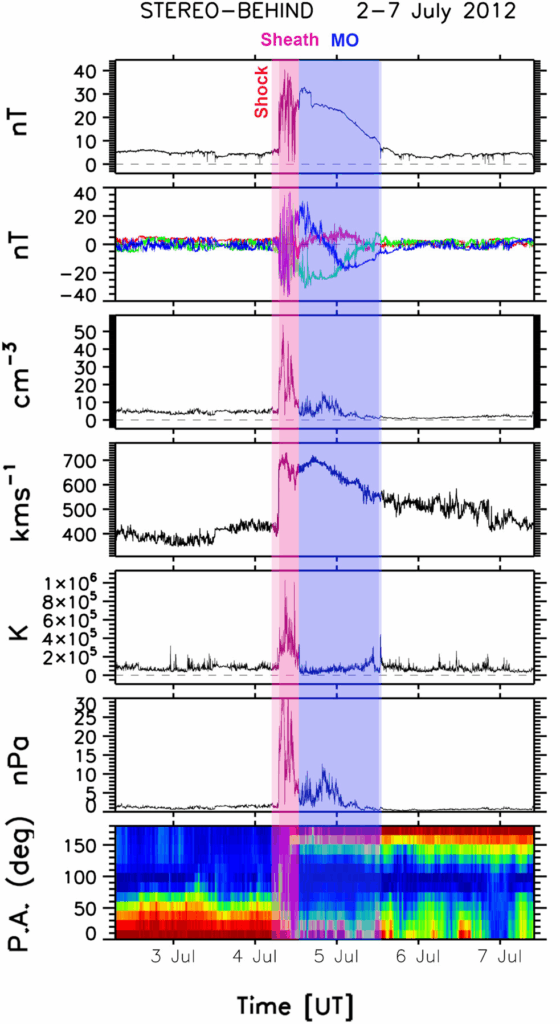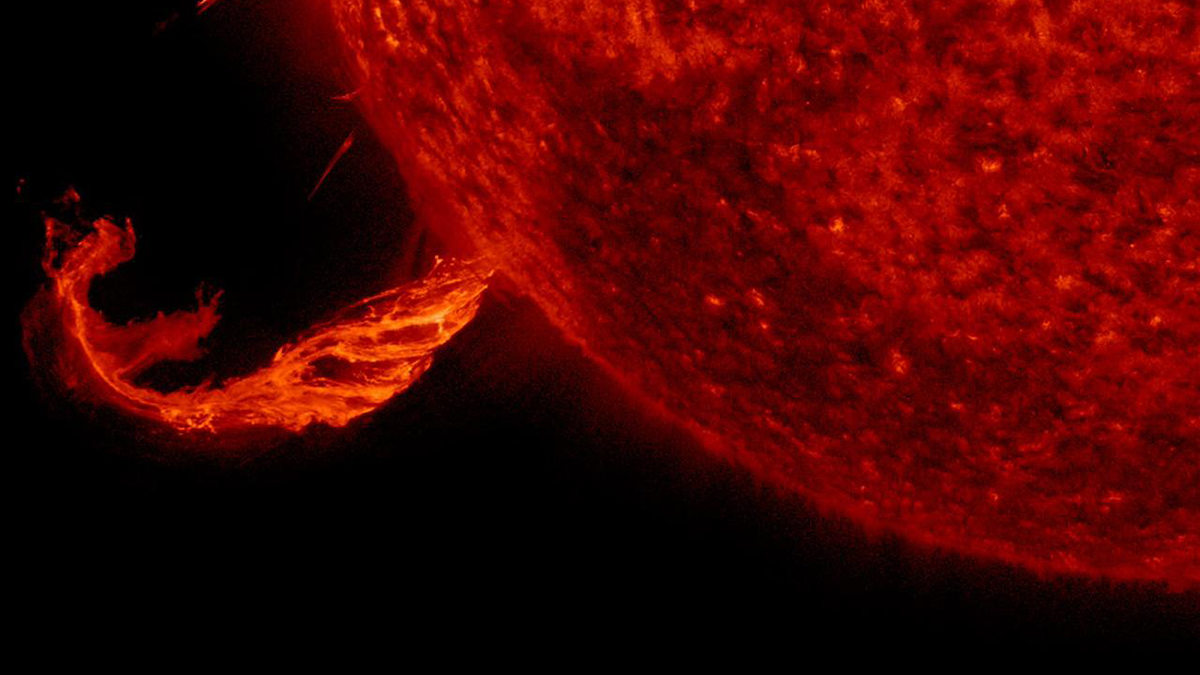Editors’ Highlights are summaries of recent papers by AGU’s journal editors.
Source: Journal of Geophysical Research: Space Physics
Active processes on the solar surface may lead to the reconfiguration of the solar magnetic field, resulting in the ejection of millions of tons of plasma from the Sun, an event known as a coronal mass ejection (CME). These immense, fast-moving clouds of particles propagate outwards through the solar system and beyond. As CME propagates in the interplanetary medium, it is referred to as an interplanetary CME or ICME. On some occasions, the Earth finds itself in the firing line of one of these ICMEs. The interaction of an ICME with the terrestrial magnetosphere often results in a strong geomagnetic storm, endangering space-based and some ground-based technologies that are crucial to modern life.

Once in a while, two (or more) ICMEs may be ejected from the Sun within hours of each other and follow close propagation paths. In such cases, the first ICME will clear a path for the subsequent one, leading to severe geomagnetic storms if these ICMEs are Earth-directed.
Kajdič et al. [2025] present a systematic study of the effects of the passage of an isolated ICME through the nominal solar wind. The results clearly and convincingly demonstrate how CMEs modify the solar wind, reducing plasma density and increasing bulk velocity. These changes lead to a decrease of drag force on following ICMEs, leading to their higher geoefficiency. These important results advance our understanding of the processes that lead to the onset of some severe geomagnetic storms.
Citation: Kajdič, P., Temmer, M., & Blanco-Cano, X. (2025). Preconditioning of the interplanetary medium due to isolated ICMEs. Journal of Geophysical Research: Space Physics, 130, e2025JA033887. https://doi.org/10.1029/2025JA033887
—Michael Balikhin, Editor-in-Chief, JGR: Space Physics

